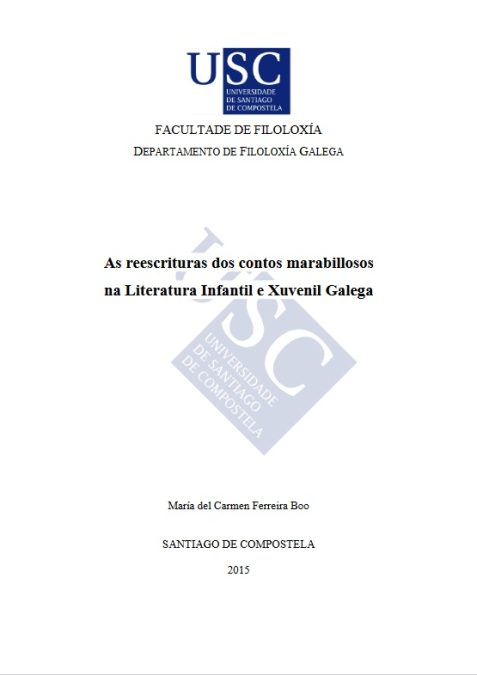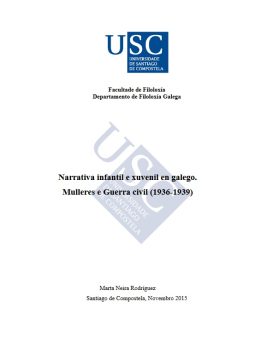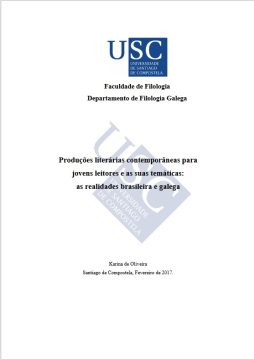Abstract
The central object of this study is the reflection and analysis of the rewritings of the wonderful stories in the Galician Children’s and Youth Literature from its origins to the year 2010. In the first part, a theoretical and methodological foundation is realized on the story of oral transmission in general and the story wonderful, in particular, noting especially the theoretical contributions of Vladimir Propp (1928, 1946) and Antonio Rodríguez Almodóvar (1982, 1989, 2004) on its origin, definition, characterization and actants, in addition to collecting the reflections of scholars on the its use, modification and rewriting in the conformation of the Children’s and Youth Literature. The second part, the most extensive, offers a brief socio-political and cultural contextualization and a journey through the History of Galician Children’s and Youth Literature to place diachronically the children’s and youth narrative production of the four types of rewritings of wonderful tales (instrumental, playful, ideological and humanizing), proposed by Valriu (2010), in three chronological periods (from the origins to 1980, from 1980 to 2000 and from 2000 to 2010) in which the abundant number of publications and the innovations that offer in terms of the . In addition, at the end of the overview of each period, a selection of those most playful and innovative “playful”, “ideological” and “humanizing” rewrites in each period are commented on more thoroughly, noting the plot, structure, point of view, timing, spatialization, characters and illustrations. Finally, with the conclusions, in addition to the general vision and together on the most notable changes and innovations, the typology of those archetypal characters of the wonderful tales that were used in the Galician children’s and youth narrative rewritings is approached.






